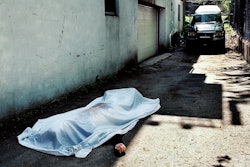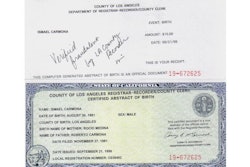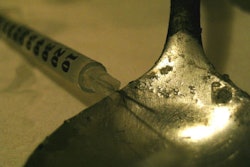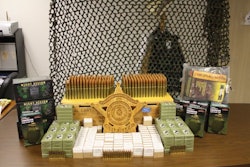I have a bone to pick with the Los Angeles Times. This once great newspaper has lost its moral compass. Once a guardian and a voice for the common citizen, it has become a forum for hit pieces to advance its own agenda.
In my three decades of working in Los Angeles as a detective, I've been interviewed and quoted many times in the Los Angeles Times. I've become friends with several reporters. Most of them have proved to be honest and fair.
But Times staff writer Victoria Kim's article "Driver in deputy's slaying provides details of attack in testimony," unnecessarily publicly identified a 15-year-old witness, and exposed him to the murderous Avenues gang's violent reprisals.
The Los Angeles Police Protective League's (LAPPL) appropriate response to the Times article was posted in the space earlier this month. This isn't the first time the newspaper made the conscience decision to expose a witness to gang retaliation.
I'd like to point out that the articles written by staff writers are reviewed by senior editors who were supposedly experienced enough to know that this wasn't honorable journalism. But they printed the teen witness' name anyway. Most newspapers even avoid printing the names of the suspects in criminal cases when they aren't yet 18, or the names of rape victims.
The Times apparently now has a policy of protecting teen suspects from public exposure, while choosing to expose a witness who courageously risked testifying in the court. As the LAPPL aptly asked, "Why do this?" The answer is shameful: to sell papers.
In June of 2005, Times staff writer Chuck Philips wrote an article in which he identified my informant, Michael Robinson, by his gang moniker "Psycho Mike." Robinson was a Compton Lantana Block Crip and a Black Guerrilla Family associate who had defected from the gang in prison. Michael Robinson had become a reliable gang informant who had testified in federal court against the "Bounty Hunter Bloods" and worked as an informant for the Los Angeles County Sheriff Department's Major Crimes Bureau for more than 15 years.
I believe the reason Chuck Philips was willing to expose my reliable informant was that Robinson had given testimony in a deposition in which he identified Suge Knight, disgraced LAPD gang officers David Mack and Rafael Perez, and Mack's friend (also a former officer) Amir Muhammad. He implicated them in the murder of Brooklyn rapper Notorious B.I.G. (Christopher Wallace).
This deposition was given under seal because of the danger of possible retaliation posed from the police, other gang members and from the gangster-police security team employed by Mob Piru gang member Suge Knight and Death Row Records. But his sealed testimony was "leaked" to Chuck Philips.
Times staff reporter Chuck Philips had been covering the hip-hop murders of Tupac Shakur and Notorious B.I.G. But his reporting tended to discount allegations against CEO of Death Row Records Marion "Suge" Knight. Later when Compton, Inglewood and Los Angeles cops who worked for Suge were implicated, he attacked the credibility of these sources. According to some sources, the daughter of then LAPD Chief Bernard Parks was supposedly partying with the cops and Death Row crew.
But Chuck Philips did all he could to twist the witness statements, expose the sources and protect his pals at Death Row. His Los Angeles Times editors failed to see that obviously his view was biased. He wasn't being objective; he was selling papers.
As a result of the Times articles and Chuck Philips, Michael Robinson was attacked physically on more than one occasion. He was shot at, cut in the face and head with a razor, and his front teeth were knocked out. The assailants even mentioned the Times article during one attack. Robinson's life was in constant danger after the publication of the article, and the FBI and sheriff's department had to relocate him several times.
Michael Robinson died of a heart attack on Dec. 5, 2006. He was only 49 years old. It is my belief that Michael Robinson died as a result of the stress and anxiety caused by his exposure and identification in Chuck Philip's hit piece that ran June 3, 2005.
In August of 2008, Chuck Philips and the Los Angeles Times were accused by another gang member and police informant of conspiring with Suge Knight to suborn perjury. Waymond "Way Out" Anderson claimed that the Times, the city attorney, and Suge Knight tried to get him to say Biggie Smalls' attorney had tried to bribe him, so he Wallace estate's attorney might be disqualified.
Anderson had been on record as agreeing with the theory that Suge Knight and the Death Row police-gangster security had conspired in Wallace's murder. "Way Out" Anderson said that Philips smuggled transcripts and written threats from Suge Knight into Anderson when he was locked up to aid him in the perjury.
However, the federal judge didn't believe the bribery allegations against the plaintiff. Judge Florence Marie-Cooper wrote that the plaintiffs "provide substantial evidence to prove that Mr. Anderson is a liar." Chuck Philips finally fell in the wake of a scandal over a retracted story based on phony documents provided by a prison inmate.
The disgraced Times staff reporter was "laid off" by the Los Angeles Times, not outright fired. The Times never admitted its faults or apologized to the victims of the suspects it protected and witness it exposed. The Los Angeles Times has the attitude that it has done nothing wrong, and it has nothing to apologize for.
I know there are other witnesses out there that have been exposed and put in danger by the newspaper's cavalier attitude. I'm no lawyer, but I believe several of the exposed witnesses and their surviving families could get together and sue the Los Angeles Times in a class-action suit for the physical and emotional damage they have caused.
They can call me as a witness.
















